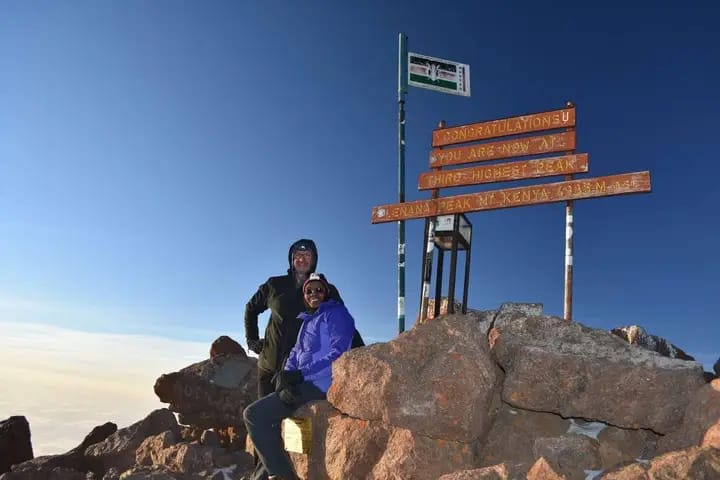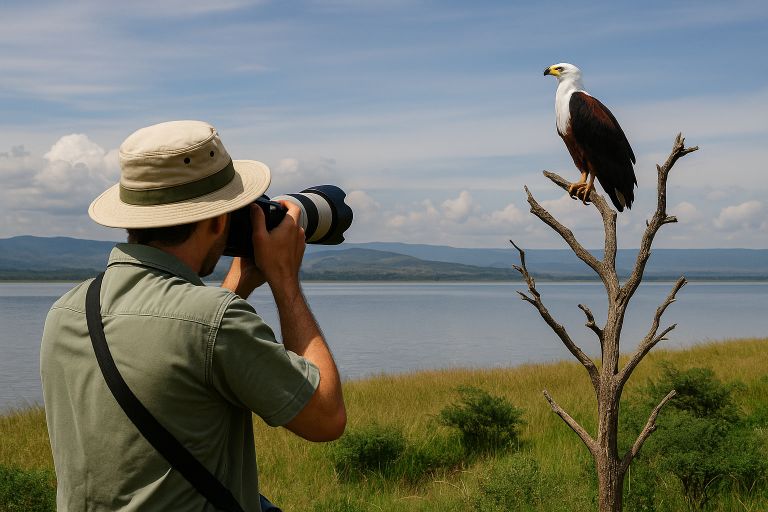Mount Kenya, Africa’s second-highest peak, is a breathtaking destination for hikers, climbers, and adventure seekers. Standing at 5,199 meters (17,057 feet), this extinct volcano offers diverse trekking routes, each with unique scenery, challenges, and time requirements. If you’re planning a climb, understanding the duration and difficulty of the trek is crucial.
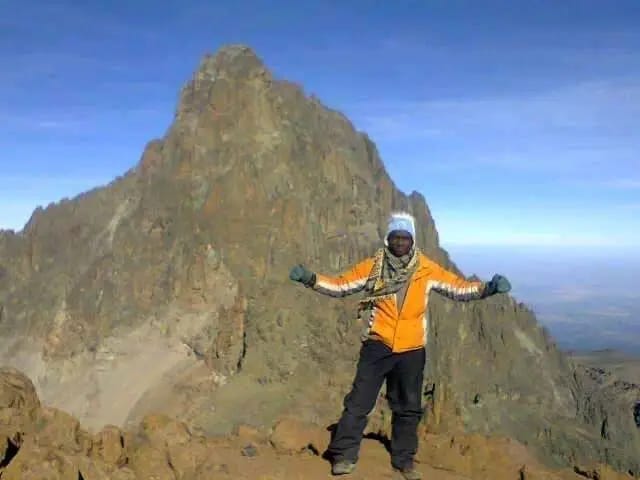
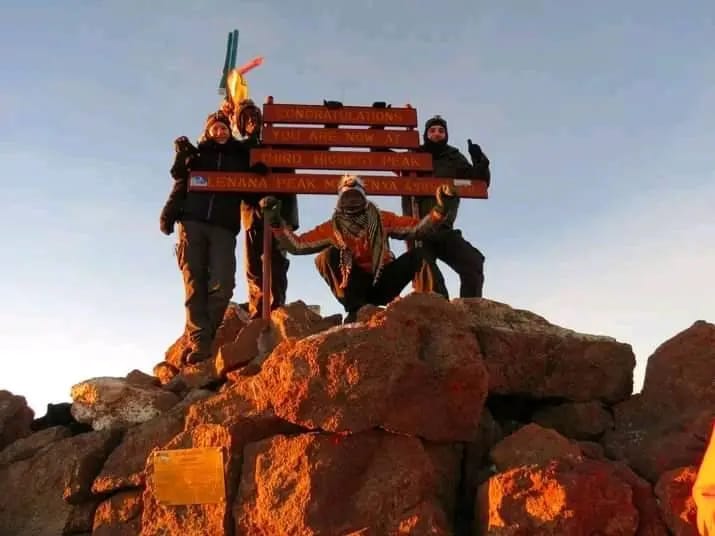
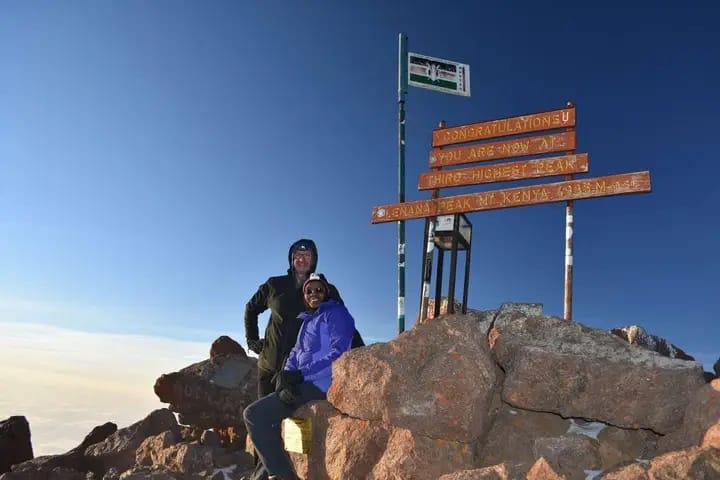
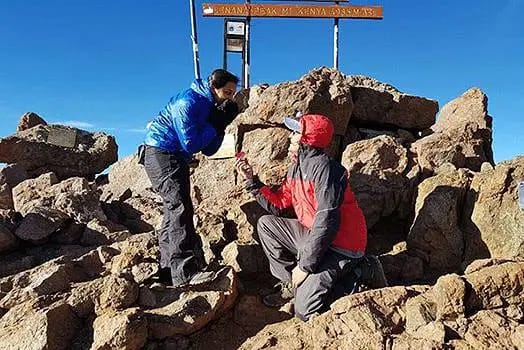
Table of Contents
How long does it take to climb Mount Kenya?
The time required to climb Mount Kenya depends on several factors, including the chosen route, physical fitness, acclimatization needs, and weather conditions. Generally, it takes between 3 to 7 days to summit and descend safely.
Popular Routes and Their Duration
Mount Kenya has several routes leading to the peaks (Batian, Nelion, and Lenana). The three most popular trekking routes are Sirimon, Naro Moru, and Chogoria. Here’s a breakdown of their duration:
1. Sirimon Route (3 to 6 Days)
- Best for: Gradual acclimatization, scenic beauty, and moderate difficulty.
- Duration: Typically 4 to 6 days, though experienced trekkers may complete it in 3 days.
- Route Overview: Starts from the Sirimon Gate (2,650m) on the northwest side and gradually ascends through montane forests and moorlands before reaching Point Lenana (4,985m).
- Recommended Itinerary:
- Day 1: Sirimon Gate to Old Moses Camp (3,300m) – 9km (3-4 hours)
- Day 2: Old Moses Camp to Shipton’s Camp (4,200m) – 14km (6-7 hours)
- Day 3: Shipton’s Camp to Point Lenana (4,985m) and descend to Old Moses (or alternative descent)
- Day 4-6 (optional): Extended trek for better acclimatization and scenic views.
2. Naro Moru Route (3 to 5 Days)
- Best for: Shortest ascent, fastest summit attempt.
- Duration: 3 to 5 days, depending on fitness and acclimatization.
- Route Overview: Starts at Naro Moru Gate (2,400m) and passes through dense rainforests and the infamous Vertical Bog, a steep and muddy section that can be challenging.
- Recommended Itinerary:
- Day 1: Naro Moru Gate to Met Station Camp (3,050m) – 10km (3-4 hours)
- Day 2: Met Station to Mackinder’s Camp (4,200m) – 10km (5-6 hours)
- Day 3: Mackinder’s to Point Lenana and descend to Met Station or beyond.
- Day 4-5 (optional): Gradual acclimatization for a safer summit attempt.
3. Chogoria Route (4 to 7 Days)
- Best for: Stunning landscapes, waterfalls, and scenic beauty.
- Duration: 4 to 7 days, allowing for a more gradual ascent.
- Route Overview: Begins at Chogoria Gate (2,950m) and passes through Lake Ellis, Lake Michaelson, and the Gorges Valley.
- Recommended Itinerary:
- Day 1: Chogoria Gate to Lake Ellis Camp (3,600m) – 10km (3-4 hours)
- Day 2: Lake Ellis to Mintos Camp (4,200m) – 12km (5-6 hours)
- Day 3: Mintos to Point Lenana and descend via Sirimon or Naro Moru.
- Day 4-7 (optional): Extended trek to explore the scenic surroundings.
Preparing to Climb Mount Kenya
Before embarking on the adventure of scaling Mount Kenya, thorough preparation is essential to ensure a successful and enjoyable climb. The first step is to select the most suitable route based on your fitness level and experience. The Naro Moru route is the fastest but steepest, while the Sirimon and Chogoria routes offer a more gradual ascent with scenic views. Understanding how long it takes to climb Mount Kenya is crucial in planning the right amount of food, gear, and acclimatization days needed for a safe climb.
Physical fitness plays a significant role in determining how smoothly your climb will go. Training for at least a few weeks before the trip, focusing on endurance, strength, and cardio exercises, can help prepare your body for the altitude and rugged terrain. Additionally, packing the right gear, including layered clothing, waterproof boots, and high-energy snacks, can make a huge difference. Since how long it takes to climb Mount Kenya varies based on individual pace and weather conditions, preparing for unpredictable situations like sudden rain or altitude sickness is important.
Lastly, mental preparation is just as critical as physical readiness. Mount Kenya’s high altitude can be challenging, so having a positive mindset and being prepared for setbacks will help you stay motivated. It’s also wise to hike with experienced guides who can provide essential support and ensure safety throughout the journey. By thoroughly preparing for the climb, you increase your chances of successfully reaching the summit and enjoying the breathtaking experience.
Factors Affecting Climbing Duration
Several elements influence how long it takes to climb Mount Kenya:
1. Acclimatization
Higher altitudes have lower oxygen levels, and improper acclimatization can lead to altitude sickness. Climbers who take an extra day or two to acclimatize have a higher success rate at summiting without health issues.
2. Physical Fitness
Trekkers in excellent physical shape may complete the climb in fewer days. However, pushing too fast can lead to exhaustion or altitude sickness.
3. Weather Conditions
Mount Kenya’s weather is unpredictable, with sudden temperature drops, rain, or snowfall affecting progress. Trekkers should be prepared for changing conditions, which may slow the ascent.
4. Route Selection
Faster routes like Naro Moru allow for a quick summit but can be more challenging due to steep inclines. Chogoria, though longer, offers a gentler, more scenic experience.
5. Guide and Porter Support
Hiring an experienced guide and porters can improve efficiency and reduce fatigue, ensuring a smoother and safer trek.
Best Time to Climb Mount Kenya
The best months for climbing Mount Kenya are January to March and June to October. These periods have drier conditions, clearer skies, and lower risks of heavy rain or snowfall.
Final Thoughts
Climbing Mount Kenya is a rewarding experience, offering breathtaking views, diverse landscapes, and an unforgettable adventure. The time required depends on your chosen route, fitness level, and acclimatization plan. Whether you opt for a 3-day fast ascent or a 7-day scenic trek, preparation is key to a successful and enjoyable climb.
So, are you ready to take on the challenge and conquer Mount Kenya? Plan wisely, train well, and embark on an adventure of a lifetime!
FAQs on How Long It Takes to Climb Mount Kenya
How many days does it take to climb Mount Kenya?
The duration of the climb depends on the route chosen. The shortest trek via the Naro Moru route takes about 3–4 days, while longer and more scenic routes like the Sirimon or Chogoria routes typically take 4–6 days to allow for better acclimatization.
What is the best route to climb Mount Kenya?
The best route depends on your experience and fitness level. The Naro Moru route is the fastest but also the steepest, making it ideal for experienced climbers. The Sirimon route is more gradual and scenic, while the Chogoria route offers breathtaking views and is perfect for those who want a more leisurely climb.
Can you climb Mount Kenya in a day?
Reaching the summit in a single day is not advisable due to the high altitude and the risk of altitude sickness. However, experienced trail runners and mountaineers have completed rapid ascents in under 24 hours. Most climbers, however, take at least 3–6 days for a safe and enjoyable experience.
How difficult is it to climb Mount Kenya?
The difficulty level varies depending on the route and the climber’s experience. The trekking routes to Point Lenana (the most popular summit) are considered moderate to challenging. However, technical climbs to Batian and Nelion peaks require advanced mountaineering skills and can take longer.
What is the best time to climb Mount Kenya?
The best time to climb Mount Kenya is during the dry seasons, which are January to March and June to October. These months offer more stable weather, making the climb safer and more enjoyable. However, preparation is key, as weather conditions can change rapidly.
Also Read:

